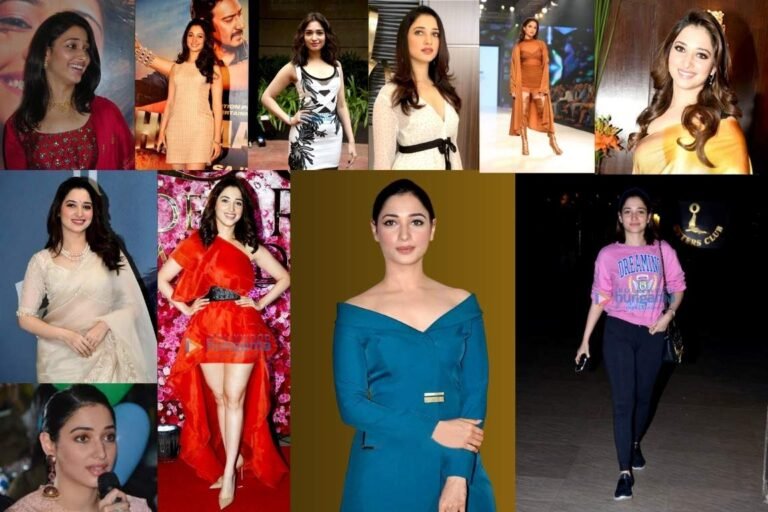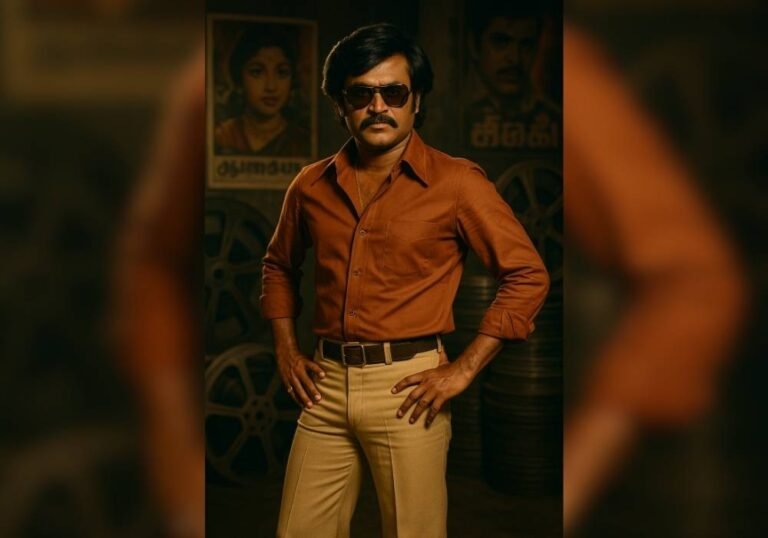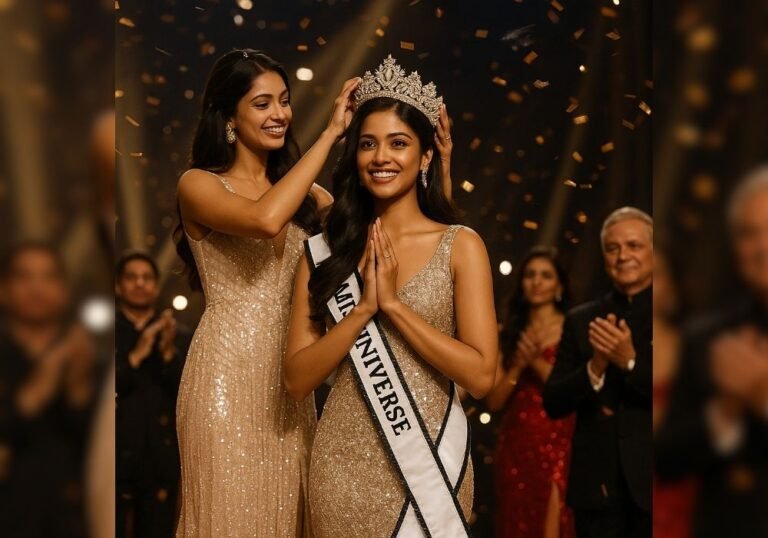The Best Fluffy Pancakes recipe you will fall in love with. Full of tips and tricks to help you make the best pancakes.
India is a land of dazzling diversity. Every state, every region, carries its own culture, language, art, and… style. One of the most beautiful ways this diversity shows is in traditional costumes. From handwoven silks to tribal prints, from desert turbans to mountain shawls — each state tells a story through what people wear.
In this article, we’ll explore some of the iconic traditional costumes from Indian states, dig into their history and meaning, and set you up for a fun quiz: Can you identify the Indian state just by its costume? Let’s start the journey!
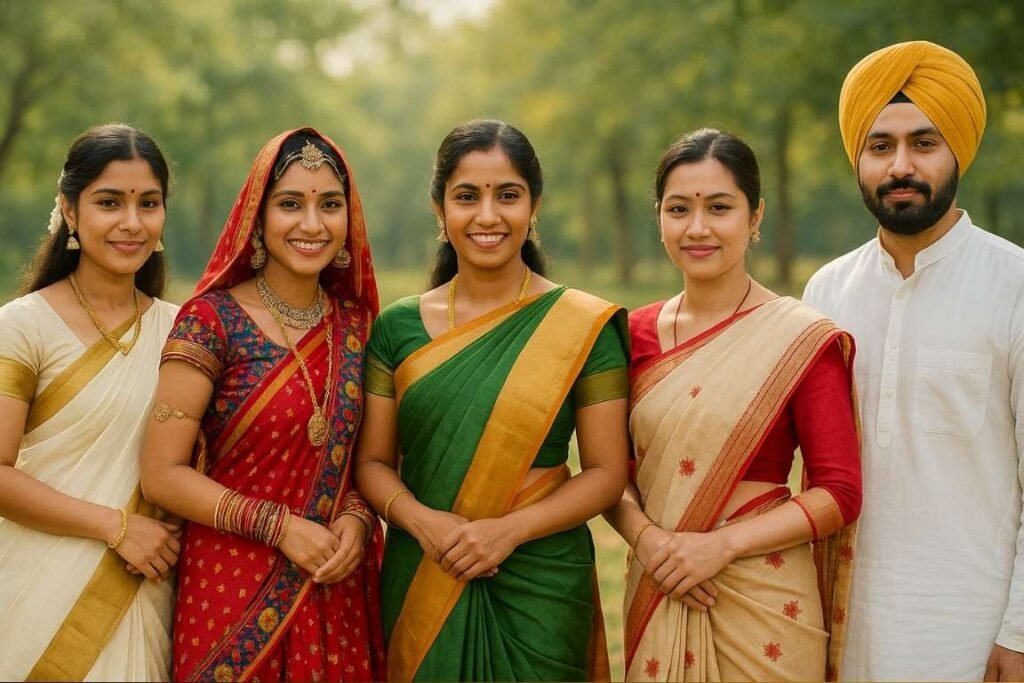
Why Costumes Matter: More Than Just Clothes
Traditional costumes are more than just fashion. They are a living expression of:
- Climate & geography: What people wear depends on whether a region is hot, cold, wet, or arid.
- Cultural history & identity: Many costumes have roots in ancient practices, royal courts, or tribal heritage.
- Materials & craftsmanship: Local weaving, dyeing, and embroidery traditions make each costume unique.
- Rituals & social meaning: Some outfits are reserved for festivals, weddings, or ceremonies, carrying deeper symbolism.
So when you see someone in a green mekhela chador or a bright Rajasthani turban, you’re glimpsing centuries of culture.
State Costumes: A Snapshot of India’s Textile Heritage
India’s diversity shines through its languages, cuisine, and art — but few things capture it better than traditional clothing. Each Indian state has a unique costume that reflects its climate, craft traditions, and culture.
Below, you’ll find an easy-to-understand overview of iconic state costumes — perfect for learning or for your next quiz image showcase on MrWillQuiz.
Assam — Mekhela Chador
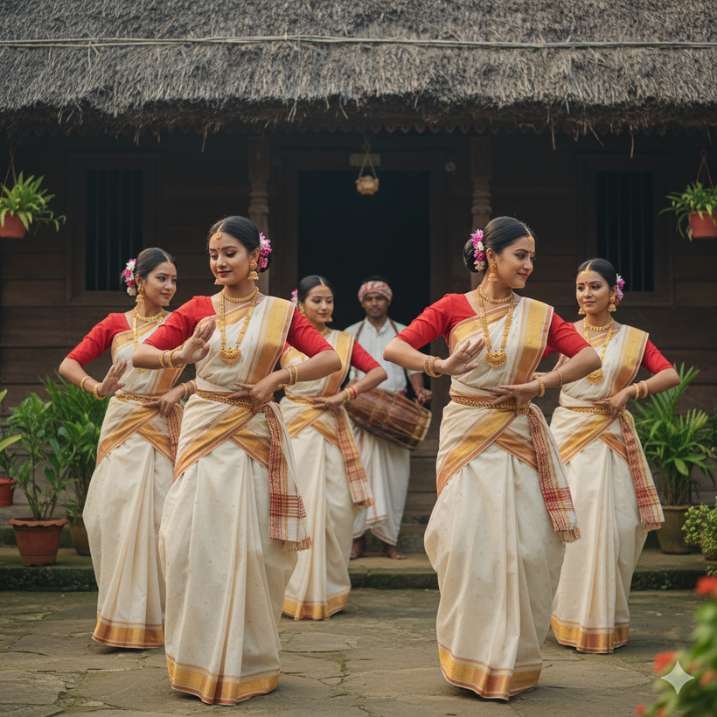
Traditional Costume (Women): Mekhela Chador
Men’s Attire: Dhoti + Kurta
Description & History:
The Assamese mekhela chador is a graceful two-piece attire worn by women. The mekhela is the cylindrical lower garment, and the chador is a draped upper cloth. Often woven from Muga or Eri silk — unique to Assam — these fabrics are known for their natural shine and durability. The designs often feature motifs inspired by nature — such as flowers, peacocks, or the Bihu festival.
Cultural Note:
It represents elegance and simplicity, often worn during Bihu celebrations and weddings.
References: Taj Fashion, Austin; Assam Handloom Board
Gujarat — Chaniya Choli
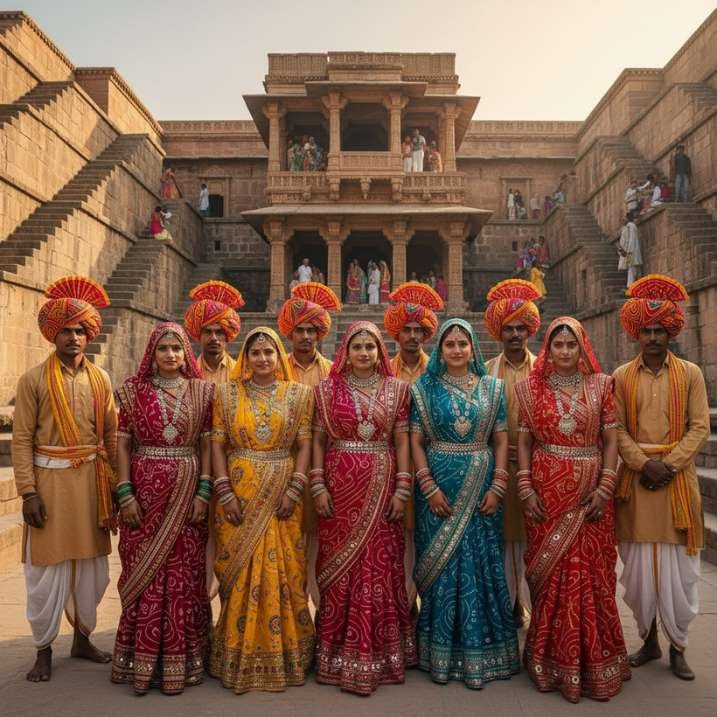
Traditional Costume (Women): Chaniya Choli (or Ghagra Choli)
Men’s Attire: Dhoti + Kurta / Kediyu
Description & History:
The chaniya choli is one of the most vibrant traditional dresses of Gujarat. The skirt (chaniya) is paired with a blouse (choli) and a dupatta, adorned with mirror work, bandhani prints, and embroidery.
Cultural Note:
This attire is widely worn during Navratri — when both men and women dress in bright colors and perform Garba and Dandiya Raas.
References: Taj Fashion, Austin
Rajasthan — Ghagra Choli & Turban
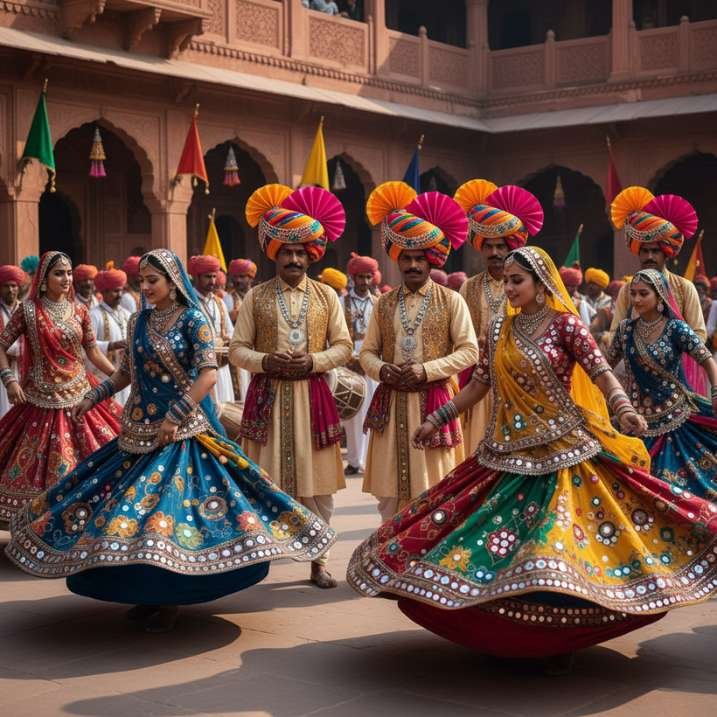
Traditional Costume (Women): Ghagra Choli + Odhnī / Dupatta
Men’s Attire: Dhoti + Kurta + Pagri (turban)
Description & History:
Rajasthan’s desert culture is reflected in its colorful clothing. Women wear long ghagras (skirts), vibrant dupattas, and heavily embroidered cholis. The fabrics feature Bandhani (tie-dye) and Leheriya (wave patterns).
Men wear turbans (pagris) whose colors and wrapping styles often indicate region or social status.
Cultural Note:
The brightness of Rajasthani dress contrasts the arid desert landscape — a perfect example of “color against sand.”
References: offers.myhubble.money; Taj Fashion, Austin
Tamil Nadu — Kanchipuram Silk Saree
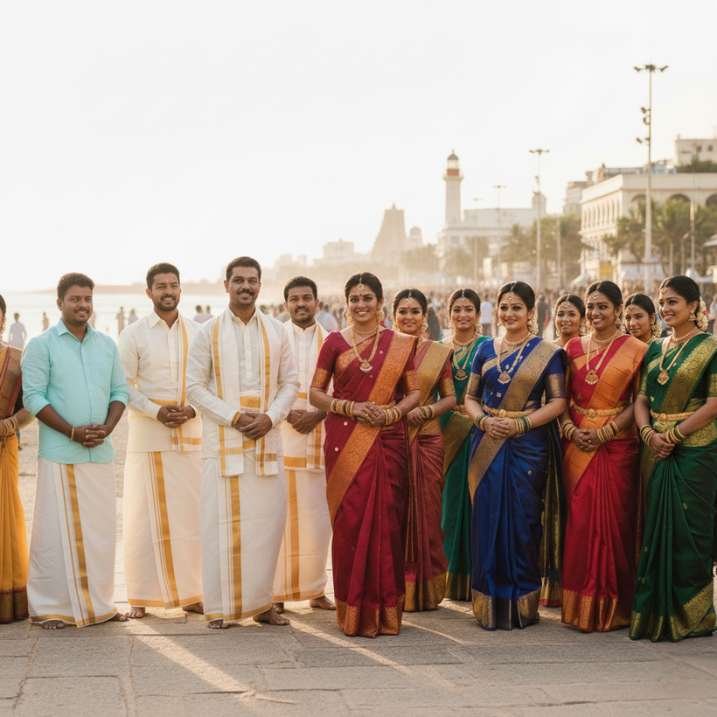
Traditional Costume (Women): Kanchipuram Silk Saree / Madisar Drape
Men’s Attire: Dhoti (Veshti) + Shirt
Description & History:
Tamil Nadu’s women are known for their Kanchipuram silk sarees, famous worldwide for their rich silk texture and gold zari borders. Each saree is handwoven in Kanchipuram using mulberry silk threads and often takes weeks to complete.
Cultural Note:
Traditionally worn at weddings and festivals, the saree symbolizes prosperity and heritage.
References: Tulsi Silks
Kerala — Mundum Neriyatum (Kasavu Saree)
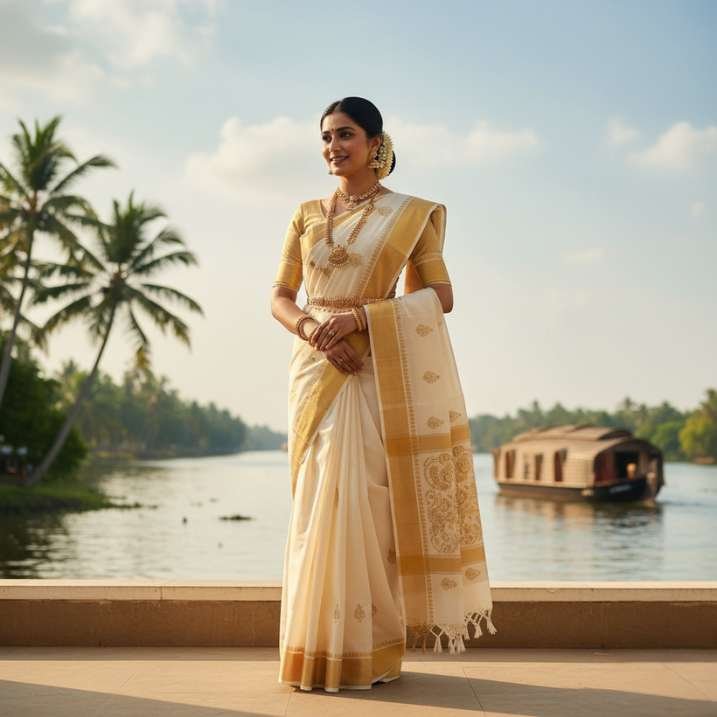
Traditional Costume (Women): Mundum Neriyatum / Kasavu Saree
Men’s Attire: Mundu + Shirt
Description & History:
The Mundum Neriyatum is one of the oldest forms of draped clothing in India. The Kasavu Saree, its festive version, is a white or cream outfit bordered with gold zari.
Cultural Note:
This costume is synonymous with Onam celebrations and represents Kerala’s ethos of simplicity and purity.
References: Wikipedia; Mirraw Blog
Maharashtra — Nauvari Saree
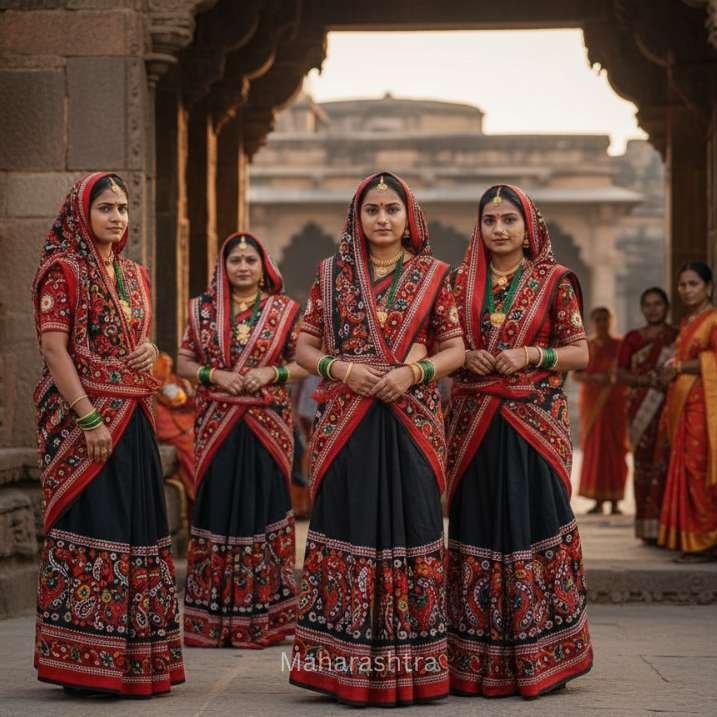
Traditional Costume (Women): Nauvari Saree (9-yard drape)
Men’s Attire: Dhoti + Kurta or Dhoti + Pheta (headgear)
Description & History:
The Nauvari saree (literally “nine yards”) is draped in a unique style that divides the lower half into two legs, resembling trousers. It originated from warrior women in Maratha times who needed to move freely in battle.
Cultural Note:
Today, it’s worn in traditional Lavani dances and Maharashtrian weddings.
References: Wikipedia
Punjab — Salwar Kameez & Phulkari
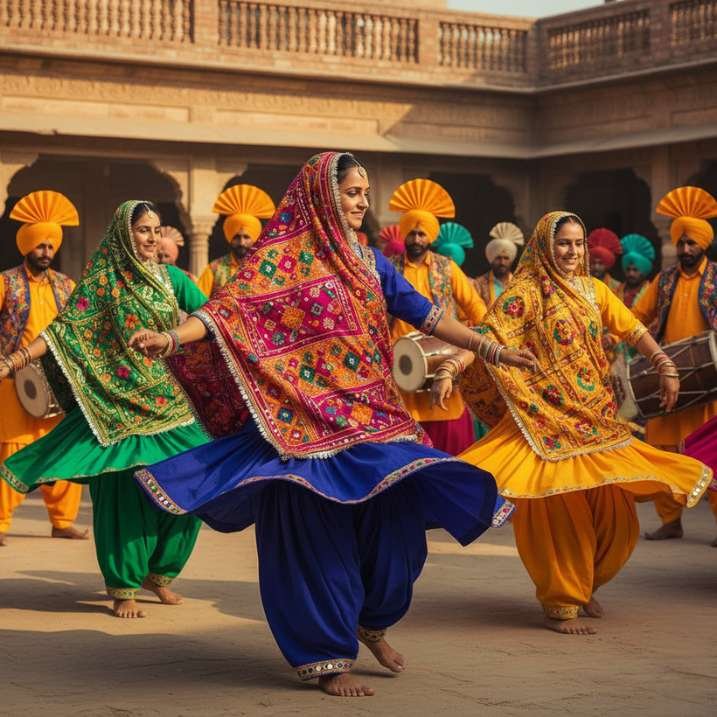
Traditional Costume (Women): Salwar Kameez / Ghagra Outfit
Men’s Attire: Kurta + Pajama / Tamba
Description & History:
Punjab’s women popularized the Salwar Kameez — a tunic worn with loose-fitting trousers and a dupatta. The fabric often features Phulkari embroidery, meaning “flower work.”
Men’s attire includes a kurta, tamba, and sometimes a turban.
Cultural Note:
Bright colors and floral embroidery reflect Punjab’s lively spirit and agricultural roots.
References: Wikipedia
Himachal Pradesh — Chola & Gaddi Dress
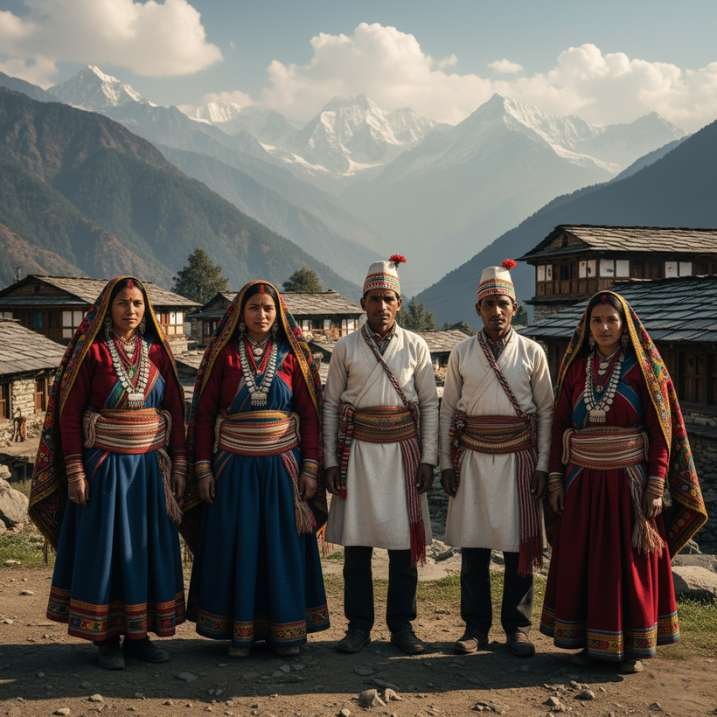
Traditional Costume (Women): Ghagra / Chola / Gaddi Dress
Men’s Attire: Woolen Tunics, Churidar, Traditional Cap
Description & History:
Due to cold weather, Himachali people prefer warm woolen garments. The Chola is a long coat-like dress tied with a belt. The Gaddi women wear colorful scarves and jewelry.
Cultural Note:
Clothing is handwoven using local wool — functional and beautiful, reflecting mountain life.
References: Taj Fashion, Austin
Odisha — Sambalpuri Saree
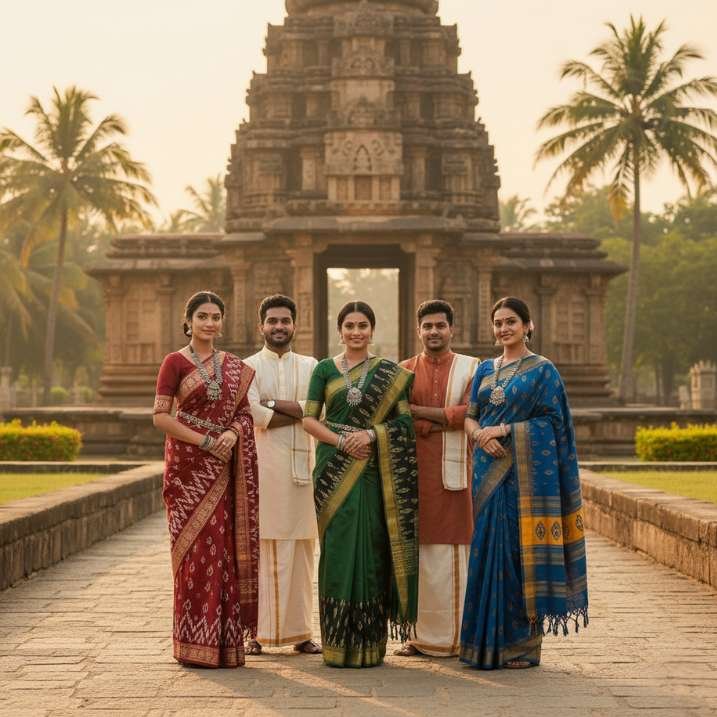
Traditional Costume (Women): Sambalpuri Saree / Ikat Weaves
Men’s Attire: Dhoti + Kurta
Description & History:
The Sambalpuri saree, crafted with the Ikat dyeing technique, is one of India’s most famous handloom exports. Geometric motifs and temple borders make it distinctive.
Cultural Note:
Each saree can take weeks to create, symbolizing Odisha’s rich weaving heritage.
References: offers.myhubble.money
West Bengal — Taant & Baluchari Saree
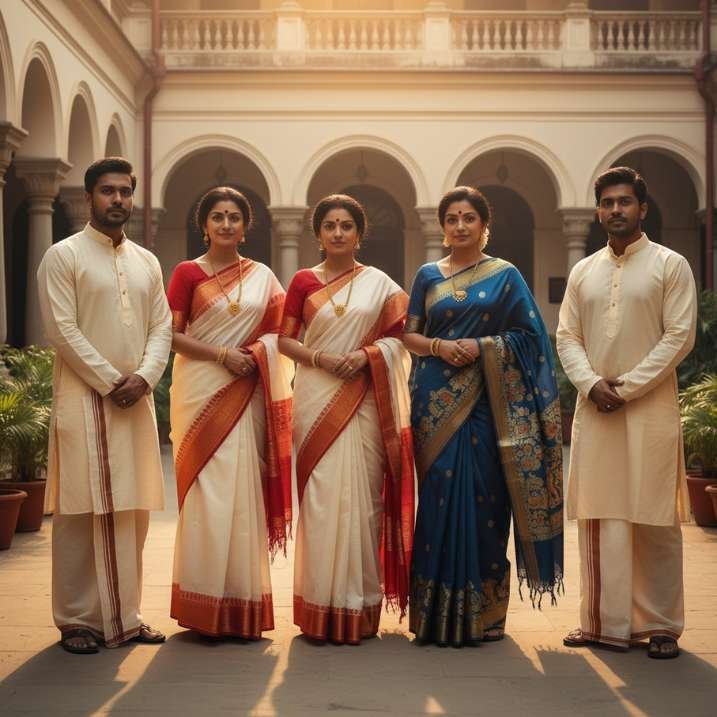
Traditional Costume (Women): Bengali Saree (Taant or Baluchari)
Men’s Attire: Dhoti + Kurta
Description & History:
Bengali women traditionally wear Taant cotton sarees for daily wear and Baluchari silks for festive occasions. Baluchari sarees are woven with mythological motifs on the pallu.
Cultural Note:
The red-and-white saree combo, often seen during Durga Puja, is iconic to Bengal.
References: offers.myhubble.money
Manipur — Phanek & Innaphi
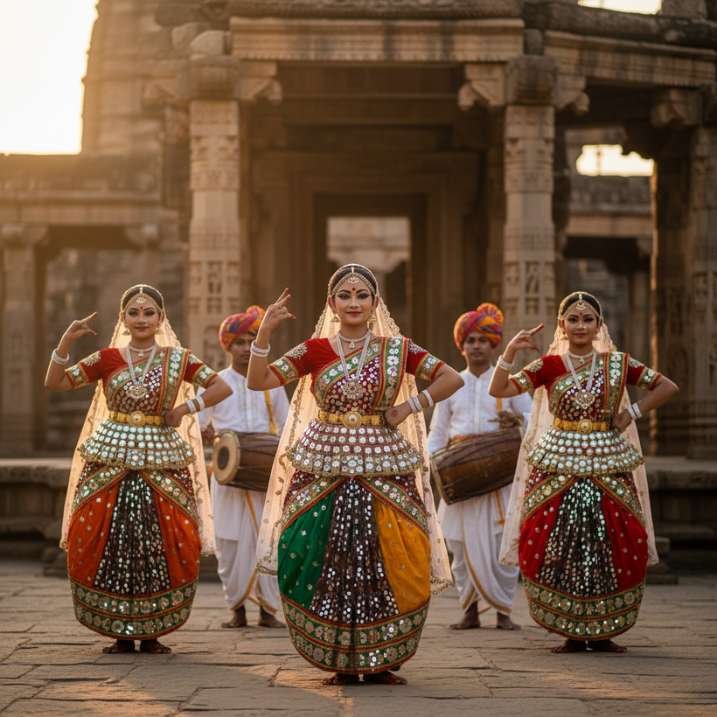
Traditional Costume (Women): Phanek (wrap skirt) + Innaphi (shawl)
Men’s Attire: Dhoti + Kurta
Description & History:
Manipur’s Phanek is a handwoven wrap skirt, usually paired with the Innaphi, a light shawl. Patterns vary by tribe and occasion.
Cultural Note:
This outfit embodies grace, simplicity, and the northeastern spirit of craftsmanship.
References: offers.myhubble.money
India’s diversity is best seen through its people and their styles. Every state has its own palette — and together, they create the masterpiece that is India.
So, ready to test your knowledge?
🎯 Take the Quiz Now →


